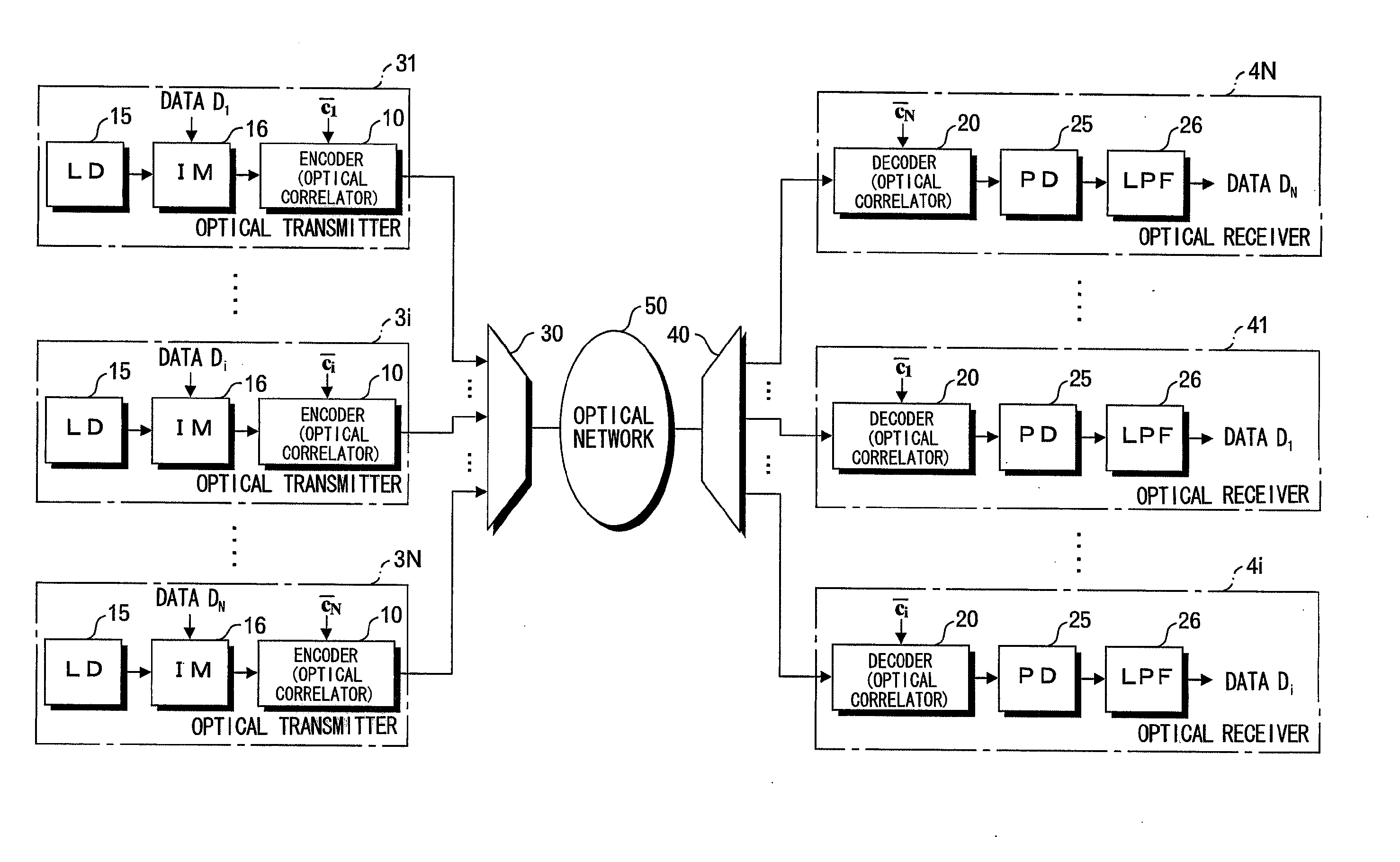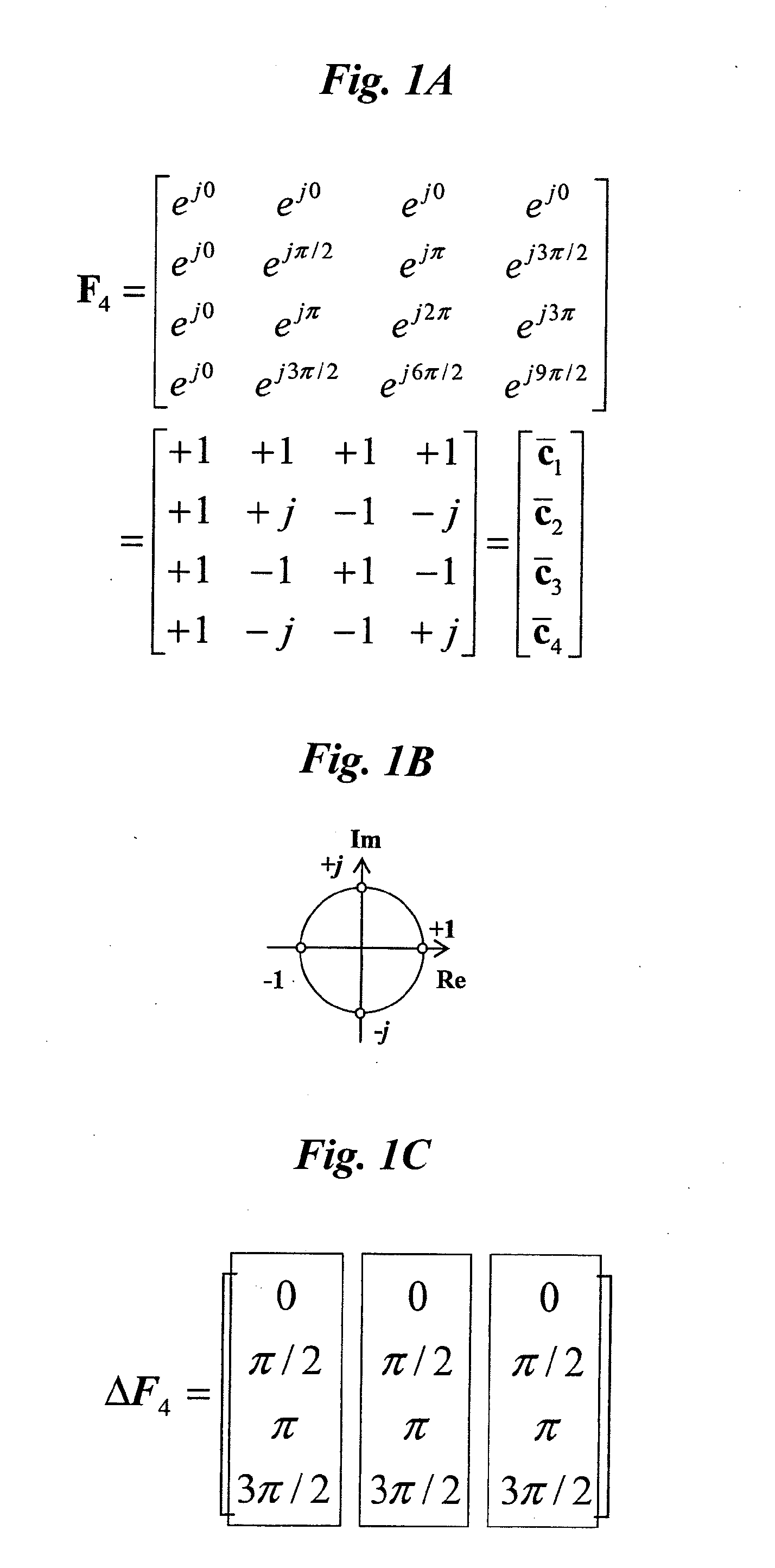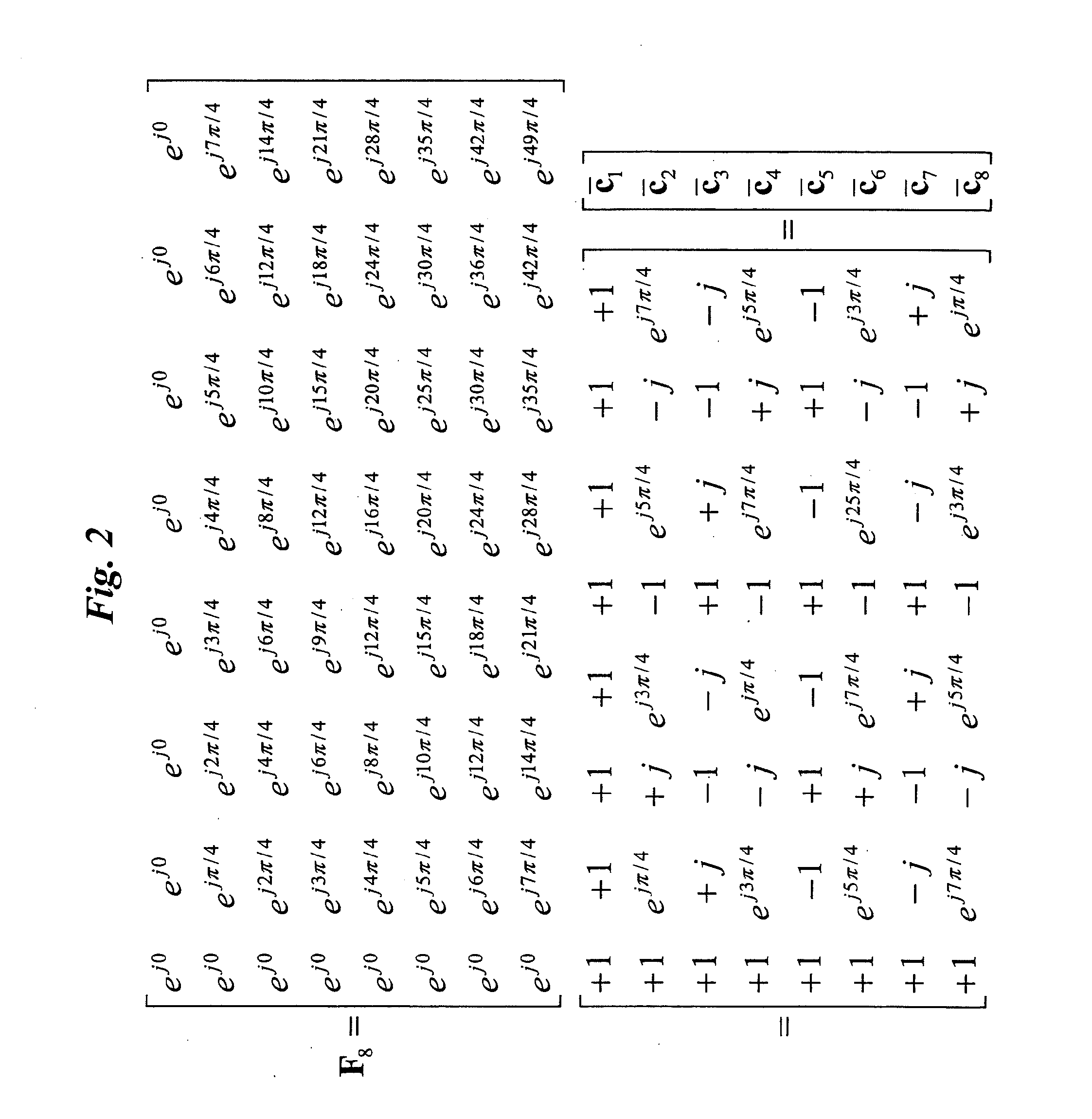Optical communication system, optical transmitter, optical receiver and methods, and correlators used therefor
a communication system and optical transmitter technology, applied in the field of optical communication systems, can solve the problems of difficult to obtain compact ssfbg-type encoder/decoder, difficult to finish polynomial time search, difficult to obtain important information, etc., and achieve the effect of keeping cross-correlation values low
- Summary
- Abstract
- Description
- Claims
- Application Information
AI Technical Summary
Benefits of technology
Problems solved by technology
Method used
Image
Examples
Embodiment Construction
[0042]A code used in optical communication based upon Optical Code Division Multiplexing (OCDM) or Optical Code Division Multiple Access (OCDMA) in the present invention is a complex orthogonal code of code length N using as a code word each row of an N×N square matrix in which an element of an mth row and nth column is represented by the following:
exp⌊j2π(m-1)(n-1)N⌋Eq.(1)[0043](m,n=1, 2, . . . , N)[0044](j is an imaginary unit)
[0045]An example of a square matrix that gives complex orthogonal codes in a case where N=4 holds is represented in FIG. 1A [this shall be referred to as “Equation (2)]. Rows c1, c2, c3, c4 are respective code words based upon the complex orthogonal code [in this specification, the bar over ci (i=1 to N) is omitted]. The meaning of each code can be understood in the complex plane shown in FIG. 1B.
[0046]An example of a square matrix that gives complex orthogonal codes in a case where N=8 holds is represented in FIG. 2 [this shall be referred to as “Equation (...
PUM
 Login to View More
Login to View More Abstract
Description
Claims
Application Information
 Login to View More
Login to View More - R&D
- Intellectual Property
- Life Sciences
- Materials
- Tech Scout
- Unparalleled Data Quality
- Higher Quality Content
- 60% Fewer Hallucinations
Browse by: Latest US Patents, China's latest patents, Technical Efficacy Thesaurus, Application Domain, Technology Topic, Popular Technical Reports.
© 2025 PatSnap. All rights reserved.Legal|Privacy policy|Modern Slavery Act Transparency Statement|Sitemap|About US| Contact US: help@patsnap.com



